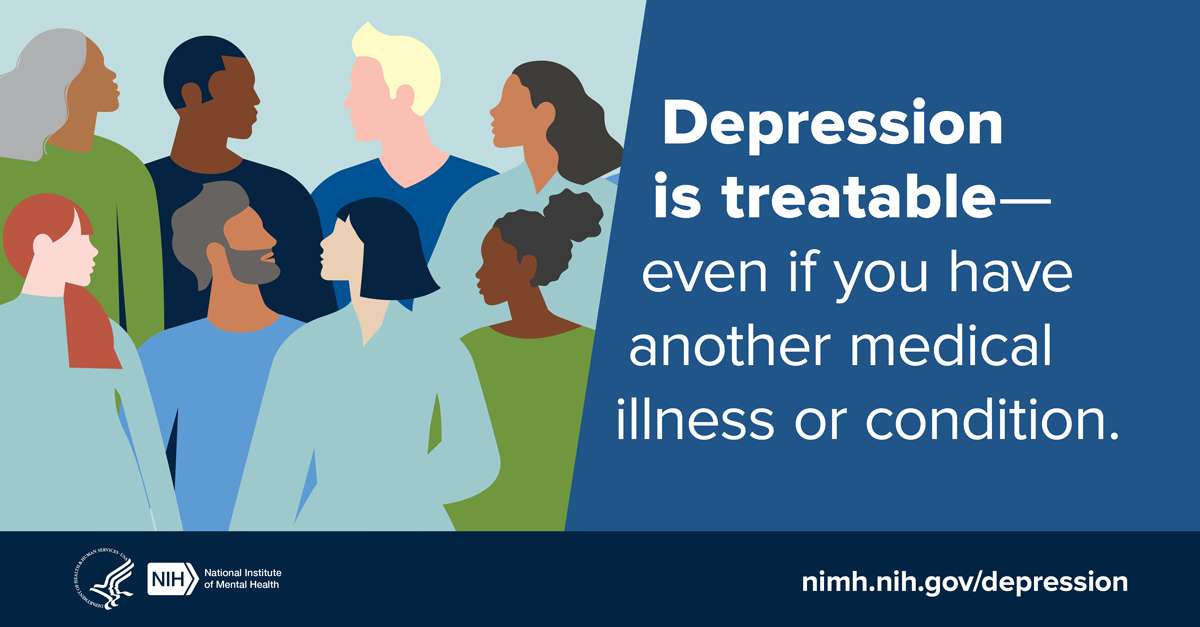What Is Holistic Therapy?
Holistic therapy, also sometimes referred to as holistic psychotherapy or body-centered psychotherapy, is an integrative type of therapy that incorporates both traditional and non-traditional treatments to help the individual as a whole.
Rather than focusing on a narrow problem, it considers mental, physical, and spiritual factors that influence a person’s well-being and seeks to help people heal and thrive on a deeper level.
Holistic therapy combines aspects of traditional talk therapy and non-traditional approaches, including hypnosis, breath therapy, and meditation.
Types of Holistic Therapy
Holistic psychotherapy is an umbrella term that can encompass a number of different types of treatments. Professionals who offer this type of treatment may refer to themselves as holistic therapists, but they may also refer to their practice as:
- Eclectic or integrative therapy: An approach that draws on multiple traditions and techniques in order to best address a person’s needs.
- Mind-body therapy: This refers to groups of techniques that focus on improving body functioning and inducing relaxations as a way to improve health.
- Somatic therapy: A body-centric approach that utilizes strategies such as breathwork, dance, and meditation to heal trauma, stress, and other mental health issues.
- Spiritual therapy: An approach that incorporates belief systems and spiritual faith to explore problems that a person faces in their life.
Techniques
Holistic therapy utilizes a range of techniques to help individuals understand their symptoms. In addition, such strategies are designed to foster a greater sense of self-awareness to better understand the connections between their body, mind, and relationships and how these elements play a role in mental health.
Such techniques are often rooted in mindfulness and bodywork practices. These techniques may include techniques commonly used in complementary and alternative medicine (CAM) that are designed to promote relaxation and help individuals better understand the connection between the body, mind, and spirit. Some of these practices include:
- Acupuncture
- Biofeedback
- Breathwork
- Guided imagery
- Hypnosis
- Massage
- Meditation
- Mindfulness
- Reiki
- Tai chi
- Yoga
In addition to these elements, therapists incorporate psychotherapy approaches including cognitive-behavioral therapy (CBT), psychoanalysis, and person-centered therapy.
What Holistic Therapy Can Help With
Holistic therapy may be helpful in the treatment of a number of different psychological conditions. Some of these include:
- Addictions
- Anxiety
- Depression
- Emotional difficulties
- Family problems
- Stress
- Trauma
- Work-related problems
Since this type of therapy seeks to heal the whole person, it may be helpful for problems that do not have a single, definable cause or those that affect multiple areas of a person’s life.
Benefits of Holistic Therapy
The wellness practices that are frequently utilized in holistic therapy are often used more generally to help people deal with tension and stress and to promote overall well-being.
One benefit of holistic therapy is that it is a whole-body approach that addresses mental, physical, and spiritual health. It often allows individuals to better see the connections between these different aspects of their lives and better understand how this affects their health and wellness.
Many holistic techniques are also strategies that people can practice and perform on their own outside of therapeutic sessions. This can be particularly helpful in daily life when people are facing situations that can trigger stress, anxiety, or changes in mood.
By implementing tactics such as deep breathing, mindfulness, or meditation, people can better manage the situations that are contributing to distress.
Holistic approaches are also often centered on prevention in addition to treatment. Rather than waiting until a problem emerges, learning to utilize holistic treatments may be helpful for preventing problems that can harm a person’s emotional, physical, social, or spiritual well-being.
Effectiveness
Because of the wide variety of techniques and approaches utilized in holistic therapy, it can be difficult to evaluate its efficacy. However, it often incorporates other empirically validated therapies such as CBT and brief dynamic psychotherapy.
Techniques such as acupuncture, yoga, and deep breathing have also been effective for many purposes.
Some research does suggest that integrated, holistic care can have many benefits.
- One 2017 article suggested that holistic approaches offer physical and mental benefits that are also cost-effective.
- Research has found that mindfulness and meditation are useful for reducing anxiety and stress and can be adapted for various purposes and situations.
- Guided imagery, often used in holistic practices, may help improve sleep, improve mood, decrease stress, and improve relaxation.
- Research has shown that deep breathing techniques can reduce stress levels and promote relaxation, which can benefit both physical and mental health.
Things to Consider
As with other types of therapy, it is essential to be willing to work with your therapist to deal with the emotional and mental conflicts you are facing. Holistic approaches require participation and are often very hands-on.
The non-profit academic medical center Cleveland Clinic notes that holistic therapy should not take the place of traditional medicine but can be used in conjunction with other treatments to help improve the healing process and overall well-being.
In some cases, your therapist may begin with more traditional, psychotherapeutic techniques before moving to other alternative therapies.
It is often helpful to approach treatment with an open mind in order to enjoy the full benefits of the process.
How to Get Started
If you are interested in trying holistic therapy, there are a few things you should do before you get started.
Find a Therapist
The first step is to find a professional in your area who practices holistic therapy. Online therapy may be an option in some cases, but many of the more hands-on practices (massage and Reiki, for example) require in-person appointments.
You might start your search by talking to your primary care physician to see if they can refer you to a local holistic therapist. Another idea is to do a general online search or look through a therapist directory.
People who incorporate holistic techniques into their practices may go by other titles including clinical psychologist or marriage and family therapist, so you may need to ask about the techniques that they practice if there is a specific experience you are interested in trying.
What to Expect
During your first session, your therapist will evaluate your current state of functioning and work with you to develop goals for your treatment. Because holistic therapy is flexible, your needs can be evaluated, and your plan adapted as you progress through therapy based on your needs.
You should also find out about insurance and payment options before you begin your treatment. Because many holistic approaches are not covered by insurance, your therapist may not accept insurance as a form of payment. Check with your insurance provider to find out what services are covered before you begin treatment.
 Holistic psychotherapy, an integrative approach grounded in psychosynthesis, focuses on the relationship between mind, body, and spirit, attempting to understand and address the ways issues in one aspect of a person can lead to concerns in other areas.
Holistic psychotherapy, an integrative approach grounded in psychosynthesis, focuses on the relationship between mind, body, and spirit, attempting to understand and address the ways issues in one aspect of a person can lead to concerns in other areas.
Those pursuing holistic therapy may, with the support of a qualified mental health professional, become better attuned to their entire awareness, which can often promote greater acceptance of the self.
History and Development of Holistic Therapy
In terms of providing health care, the use of the term “holistic” dates back to the time of Hippocrates, over 2,500 years ago. Believing it was insufficient to focus on one aspect of a person, Hippocrates emphasized the importance of establishing equilibrium within individuals, viewing the person as a whole being made up of many parts working in concert with one another.
In the 20th century, health care became more medically focused as the care of certain symptoms was reduced to one form of intervention. Issues with the mind were typically treated with talk therapy and symptoms in the body were addressed with drugs and surgeries. The mind and body were consistently viewed as separate entities.
Find a Therapist
Advanced Search
It was not until the 1970s that people in medical and other health care fields began to feel treating only one or a few symptoms generally only served to manage certain issues and did not always succeed in helping people improve their overall quality of life. The first national conference on holistic health, held in 1975, began a movement for alternative forms of care both in the field of medicine and among therapists.
Established in tenets of acceptance and relaxation, holistic therapy draws from multiple forms of therapy, such as:
Theory and Methods of Holistic Therapy
Holistic therapy theory holds that a person’s consciousness is not housed in any one part of the person but is instead an integration of the mind, body, and spirit. Practitioners of holistic psychotherapy, who believe viewing each person as a whole being is an essential first step in providing care, typically collaborate with those in therapy to help them gain awareness of the connections between their emotions, thoughts, physical experiences, and spiritual understandings. Therapists can help individuals realize each of these components work together in harmony to support typical daily function. This deeper understanding of the whole self can often lend itself to greater self-awareness, self-esteem, and self-acceptance.
Holistic therapy does not work to eliminate symptoms. Instead, this therapy method views symptoms as one way a person’s consciousness can bring attention to a person’s higher awareness. In order to develop awareness through holistic therapy, practitioners work less to help individuals achieve change and more to help them accept the present moment—who they are and where they are. Therapists offer support as people in therapy work to accept what is going on within. Once this acceptance is achieved, individuals may be able to let go of their own resistance, which can further allows them to relax and release any fears. Acceptance and relaxation are important components of this therapy.
Exercises in Holistic Therapy
Holistic therapy exercises look to intervene on three levels: the body, the emotions, and the mind/soul. Initial exercises in holistic therapy often utilize massage and bodywork techniques to focus a person’s attention on areas of tension in the body. These areas of tension are believed to be manifestations of deeply repressed emotions. Once a level of trust is established between the therapist and the person in therapy, the therapist can help the person to release bodily tension. This release often allows the person to be more receptive to numerous emotions.
The next exercises utilize verbal forms of psychotherapy in the process of understanding the emotions arising from the release of the bodily tension. The therapist and person explore these emotions and the role they play in the person’s life. The therapist may often emphasize the person’s repression of these emotions as an exercise in helping the person take control of the emotions. Many people in therapy resist at this level and deny any responsibility for their emotions, but only once the decision (conscious or unconscious) to repress each emotion has been realized can work in the holistic sessions continue. The goal of the exercises is the reintegration of the repressed emotions as part of the person’s whole self.
The exercises involved in the third level of mind and soul are often the most difficult to reach. Therapy may continue for years before this level is reached. These exercise stem from an existential approach in which the therapist and person collaborate in an endeavor to connect the person to a deeper meaning in the world. This process typically involves psychoeducation on philosophy and meditation.
Issues Treated with Holistic Therapy
Holistic therapy can be used to address any number of challenges, in a diverse range of individuals. A holistic approach may be beneficial in the treatment of:
The ideas behind holistic therapy are frequently used in areas of preventative therapy, which are also known as wellness practices. Within the realm of prevention, holistic therapy takes the form of numerous alternative practices such as meditation, yoga, acupuncture, and massage therapy. In addition, a wellness-focused therapist will generally work with people to strike a balance in taking care of their mind, body, and spirit. This often involves encouraging people to take part in physical activities, explore their spirituality (for those who express a spiritual nature), or remain connected to their loved ones through positive communication styles.
Criticisms and Limitations of Holistic Therapy
Holistic therapists themselves cite a major limitation to the three-level intervention discussed above: A majority of people find it difficult to reach the mind and soul level. One possible reason for this is the lengthy amount of time—often years—it may take to work through the emotion level. Many people have been reported to drop out during the emotional interventions of holistic therapy.
Clinical holistic therapy was developed in response to the lengthy duration of holistic therapy as an attempt to reduce the amount of sessions needed for people to achieve an improved sense of well-being. Clinical holistic therapy occurs over a maximum of 40 sessions and incorporates psychodynamic approaches and bodywork. An interdisciplinary team of professionals collaborate to best attend to an individual’s symptoms, somatic or otherwise, as well as other emotional and/or spiritual needs.
References:
- A history of holistic health. (2015). Retrieved from http://www.naturalhealers.com/holistic-health-history
- Latorre, M. A. (2000). A holistic view of psychotherapy: Connecting mind, body, and spirit. Perspectives in Psychiatric Care, 36(2), 67-68.
- Ventegodt, S., Andersen, N. J., & Merrick, J. (2003). Holistic medicine iii: the holistic process theory of healing. The Scientific World Journal, 3, 1138-1146.
- Ventegodt, S., Kandel, I., Neikrug, S., & Merric, J. (2005). Clinical holistic medicine: Holistic treatment of rape and incest trauma. The Scientific World Journal, 5. Retrieved from http://www.ncbi.nlm.nih.gov/pubmed/15962195
- Ventegodt, S., Morad, M., & Merrick, J. (2004). Clinical holistic medicine: Prevention through healthy lifestyle and quality of life. Oral Health and Preventative Dentistry, 2, 239-246.
- Ventegodt, S., Thegler, S., Andreasen, T., Struve, F., Enevoldsen, L., Bassaine, L., … & Merrick, J. (2006). Clinical holistic medicine: psychodynamic short-time therapy complemented with bodywork. A clinical follow-up study of 109 patients. The Scientific World Journal, 6, 2220-2238.



